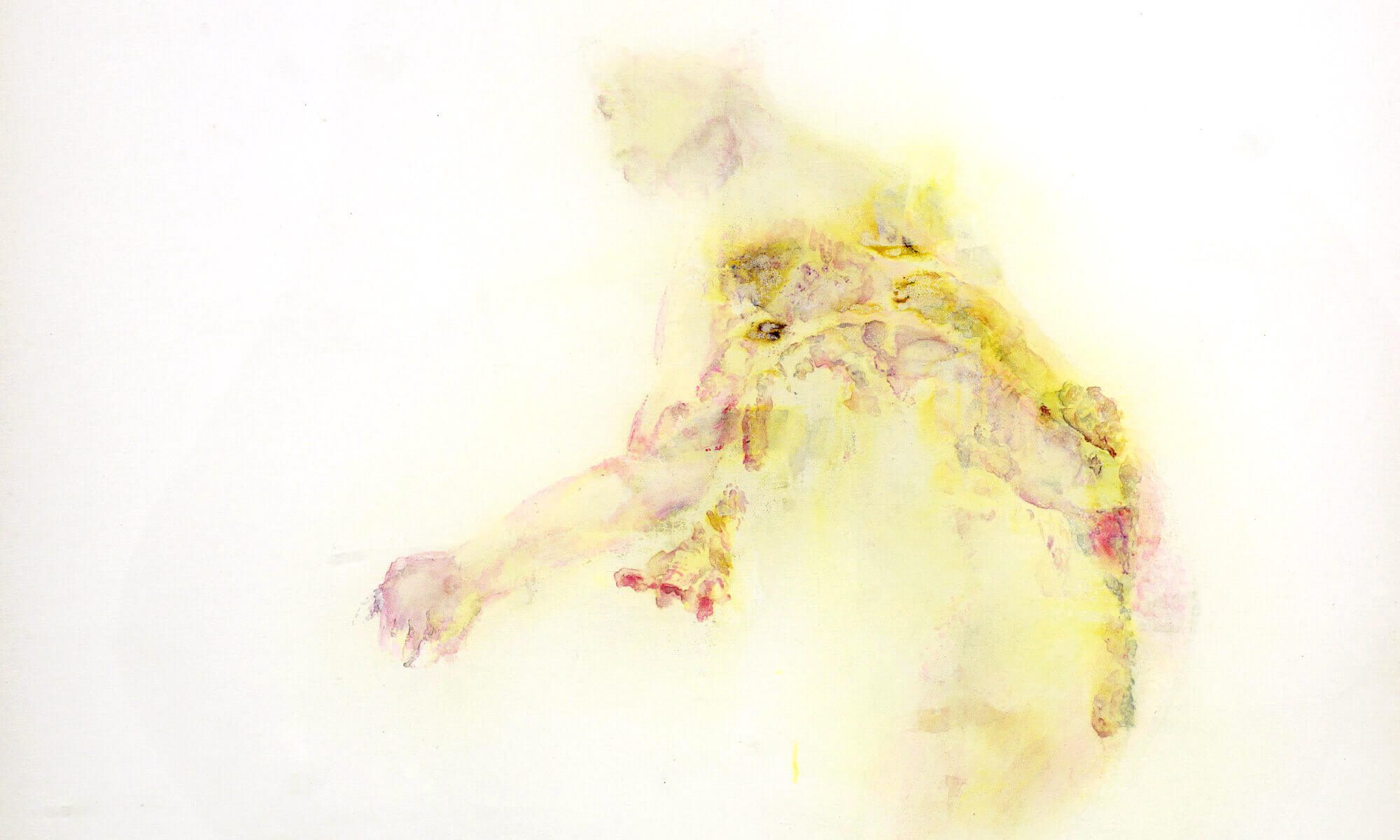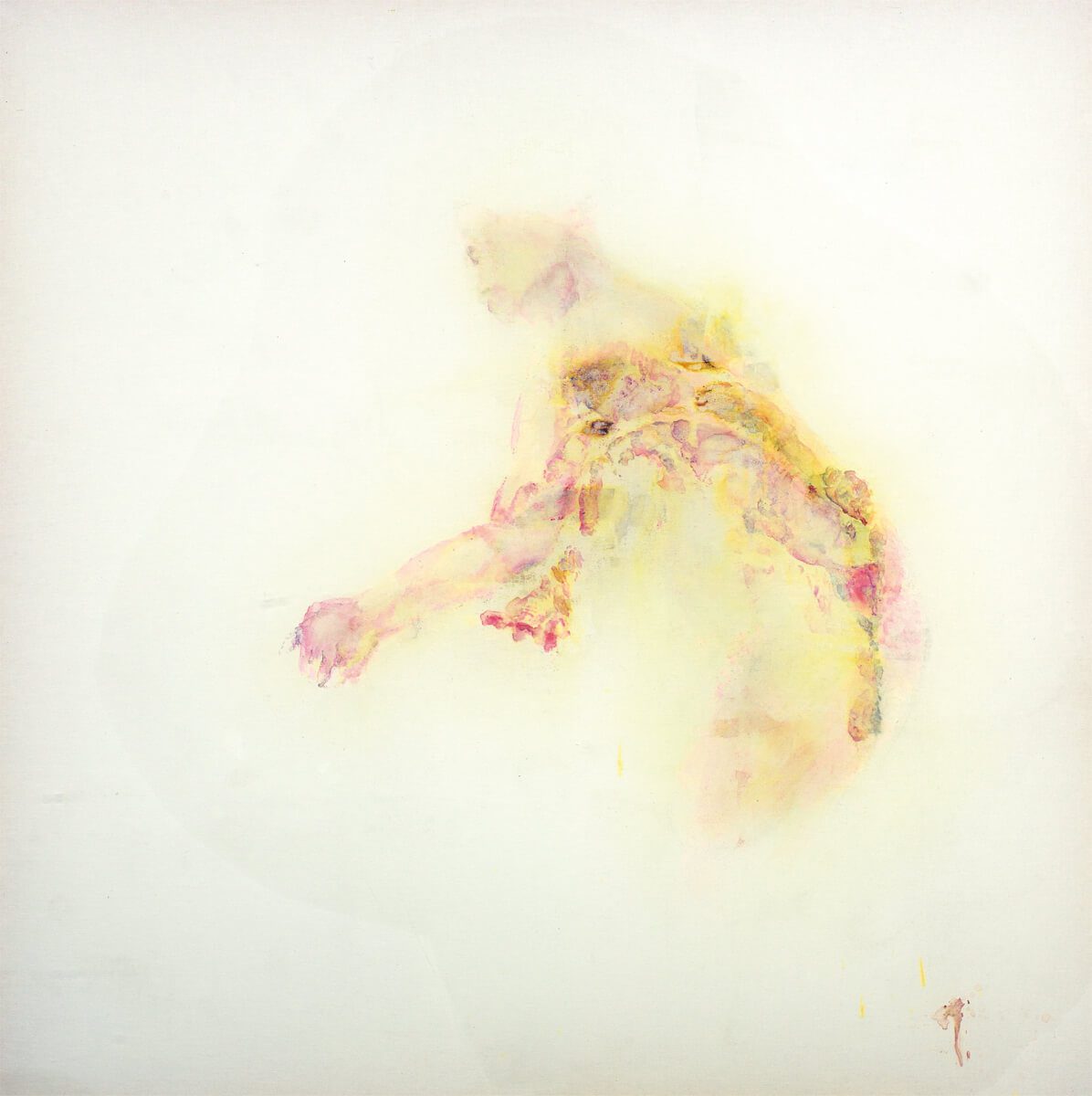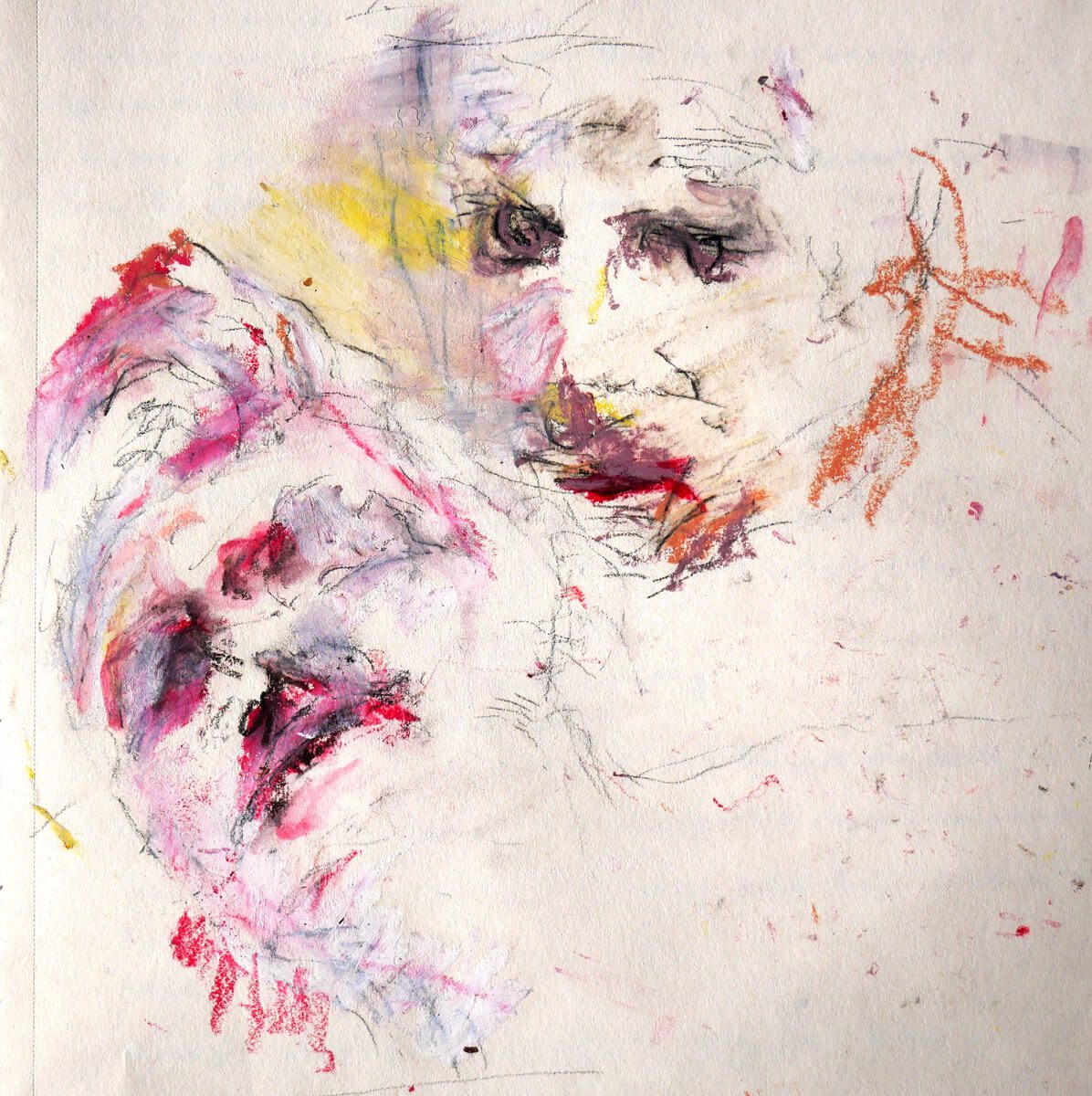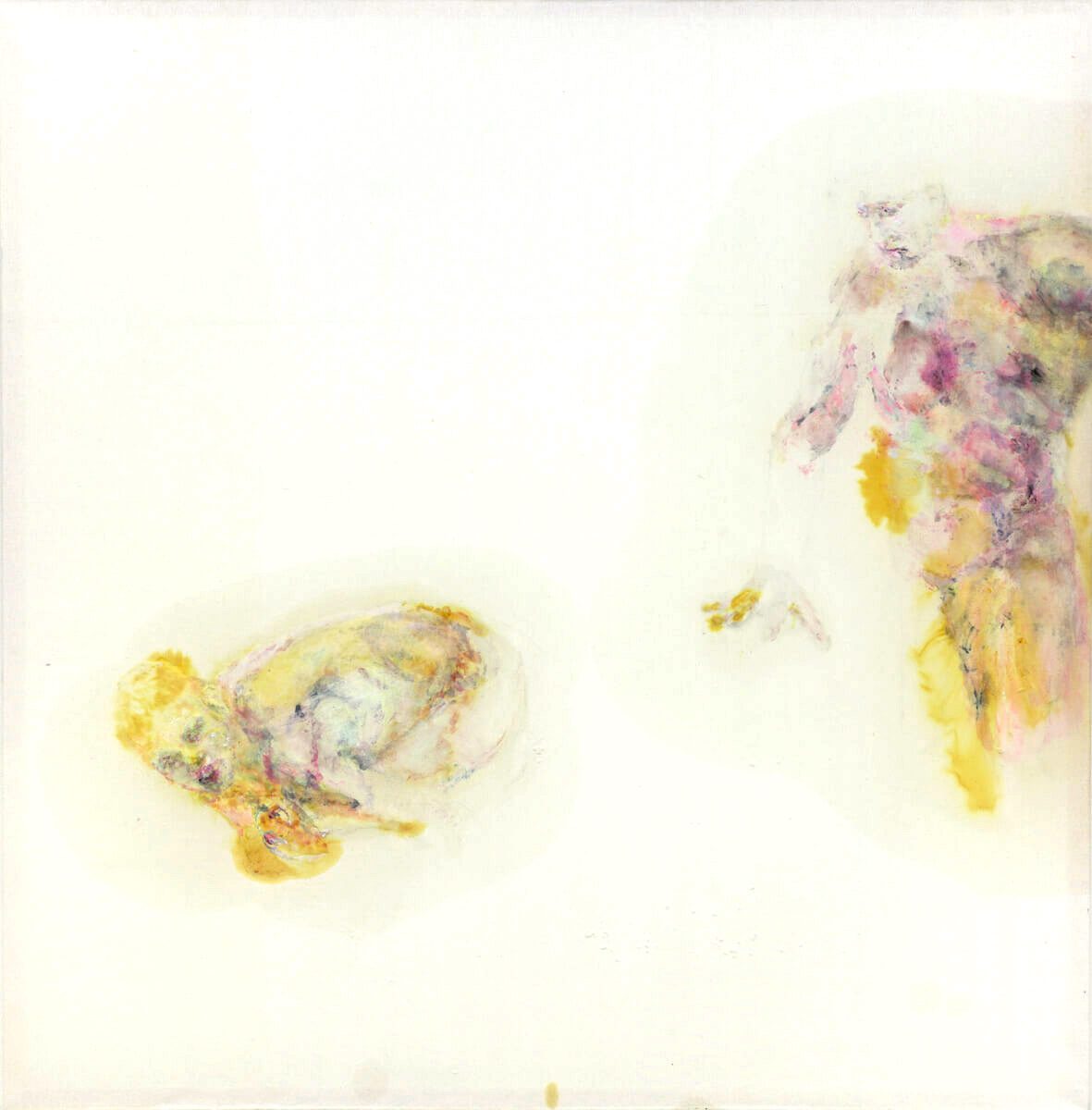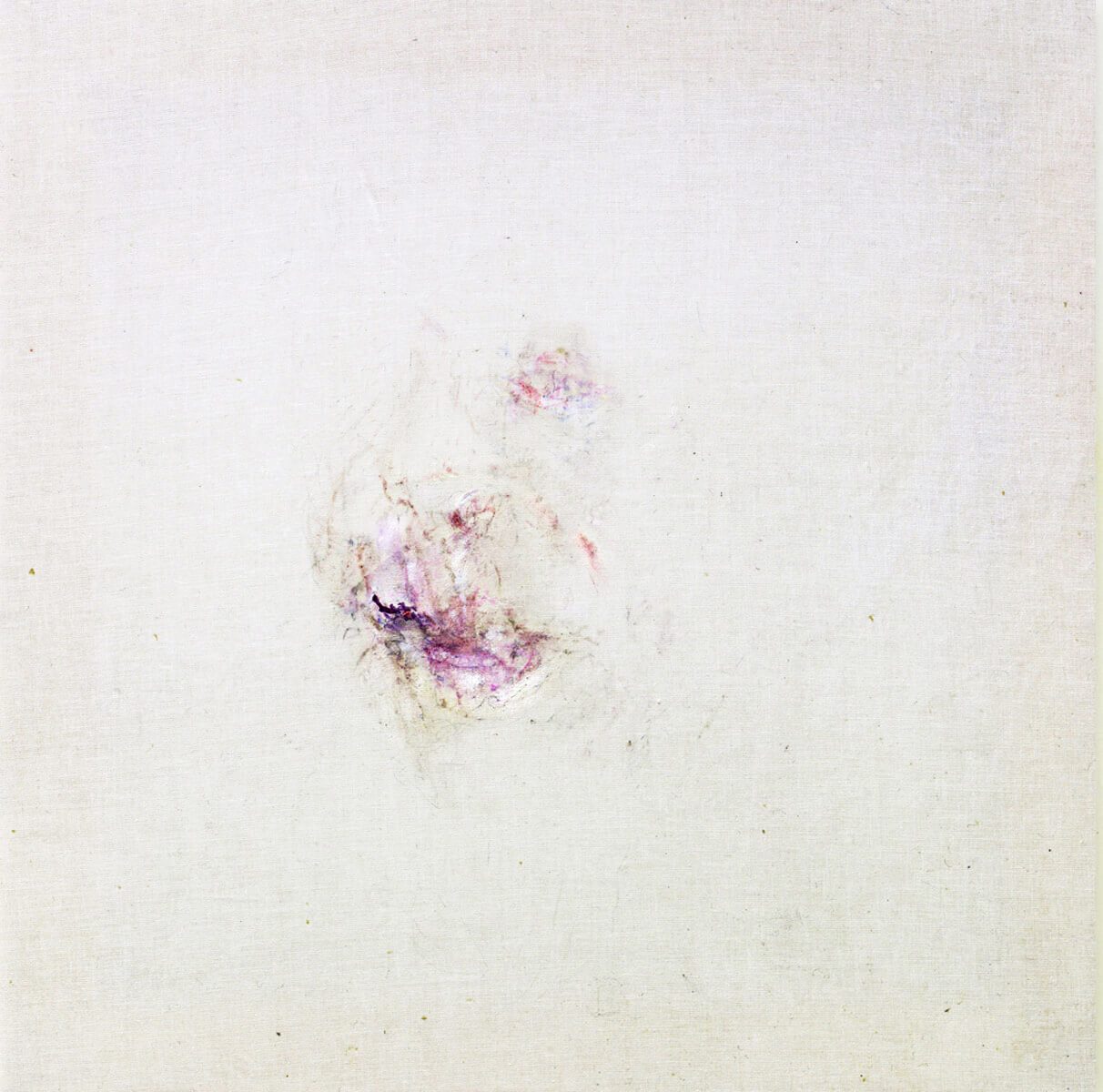Issa Sant fathoms layers of human being, by exhibiting bodies bare of
every social or individual protection layer. The haunting figures of her
paintings embody human condition in all its vulnerability, violence and beauty.
Sant’s nameless figures are naked and bare in a radical way: Muscles,
bones and flesh aggregate to tender and frail figures, which seem to come out
of the white surrounding. Without definite contour they get their uncanny
presence from the maelstrom-like force of intertwining brush marks, which allow
the underlying tissues to shrine through. The defenseless openness of the
exposed bodies is disconcerting and comforting simultaneously: without any
limitation, isolation and intimacy, desire and pain, sorrow and hope becomes
visible.
In the encounter with other figures, an interhuman structure occurs:
Moments of loneliness and affection, struggle and love. With this, Sant
disclaims defined and defining temporal and spatial descriptions and
attributes: the figures are held in a pure white space, totally thrown back on
themselves and the Other. In such imperiled, fragile and singular encounters,
Sant discovers beauty.
Issa Sant lives and workes in Berlin.
Jon M. Lennartz
